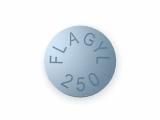The most common treatment option for STDs is antibiotics. Many people spend much money on buying brand-name antibiotics. We can offer every person facing such a problem to change the made decision and buy generic antibiotics online. Our website is the main source of generic medications directed to treat bacterial infections.
Our online pharmacy offers top-quality generic antiobiotics with the same effect as branded ones have. We establish the most favorable terms to make such antibiotics allowable for all. It doesn’t matter what income you have. In any case, you will get antibiotics able to cope with gonorrhoea or siphyllis.
Our company offers international delivery that’s why every person in the world can make an order irrespective of his/her living place. The methods of payment are also diverse: Visa, MasterCard, JCB, Discover, ACH. Choose the most appropriate one and submit an order.
Best antibiotics that can cure STD
Our online catalog includes the following list of antibiotics effective in the cure of STD:

Amoxil
Amoxil is applied to cure bacterial infections in many different body parts.

Flagyl
Flagyl is used to treat parasitic infections including Giardia infections of the small intestine.

Suprax
Suprax is prescribed for the treatment of adults and pediatric patients 6 months of age or over with the diagnosis of uncomplicated gonorrhea.

Trimox
Trimox is an antibiotic applied to cure certain bacterial infections such as pneumonia, bronchitis, gonorrhea, and certain types of ulcers.

Tinidazole
Tinidazole is used to cure infections caused by protozoa (eg, trichomoniasis, giardiasis, and amebiasis).
What are STD?
 STDs are sexually transmitted diseases (infections) that are spread all over the world. According to the WHO, every sixth inhabitant of the globe suffers from any of these diseases.
STDs are sexually transmitted diseases (infections) that are spread all over the world. According to the WHO, every sixth inhabitant of the globe suffers from any of these diseases.
It is very easy to catch an infection. If sexual intercourse is unprotected, more than twenty-five types of pathogens can be transmitted at a time. Most often, these are trichomonads, myco and ureaplasmas, chlamydia, gonococci, human papillomaviruses and herpes. The incubation period of diseases ranges from 2 to 3 days to several weeks. To date, 31 pathogens are included in the list of STDs: 10 types of viruses, 15 types of bacteria, 1 type of fungus, 3 types of protozoa and 2 types of ectoparasites.
The most severe sexually transmitted disease is AIDS (acquired immunodeficiency syndrome). AIDS occurs if the body’s defense system is weakened by the immunodeficiency virus, and there is no way to save a person from this disease.
Types
Types of sexually transmitted infections:
- bacterial infections;
- viral infections;
- fungal infections;
- infections caused by protozoa;
- parasitic diseases.
Bacterial infections
Bacterial STIs are by far the most common. According to the World Health Organization, each year the three most common infections (syphilis, gonorrhea, chlamydia) infect about half a million people. Sexually transmitted bacterial infections include:
- Syphilis. It is a severe chronic sexually transmitted disease caused by the microorganism treponema pallidum (pale treponema). It affects not only the organs of the reproductive system, but also many internal organs, including the brain, causing severe consequences.
- Gonorrhea. Gonorrhea is a sexually transmitted disease that is caused by the bacterium Neisseria gonorrhoeae. It has a tropism for the mucous membranes of the genitourinary system (that is, it grows and multiplies best in this environment). Therefore, it affects mainly only them, but the mucous membranes of the rectum, oral cavity, and eyes can also be affected.
- Chlamydia. Chlamydia is one of the most common sexually transmitted infections. It is caused by the microorganism Chlamydia trachomatis, which can affect the entire genitourinary system of men and women.
- Other infections. This STD (STIs) includes many other bacterial infections that are significantly less common. This is an inguinal granuloma, venereal ulcer (veneral disease), ureaplasma, etc.
Viral infections
Sexually transmitted viral infections are a severe problem, since most of them today do not have an effective treatment. Modern medicine can only stop the symptoms, slow down the disease course, but the virus has not yet been completely eliminated. Sexually transmitted viral infections include:
- HIV infection. The human immunodeficiency virus is an extremely dangerous causative agent that causes HIV infection. In the last stages of infection, it leads to acquired immunodeficiency syndrome (AIDS).
- Hepatitis B and C. Hepatitis B and C viruses can enter the body through unprotected sexual contact with the infection carrier. The liver is affected. A chronic course may cause severe consequences.
- Human papillomavirus. The virus causes the growth of the skin and mucous membranes in the form of genital warts. Sometimes it can cause the development of cancerous tumors.
- Cytomegalovirus. The cytomegalovirus also belongs to the family of Herpesviridae. It is a great danger for people with reduced immunity and pregnant women.
Fungal infections
Fungal infections most often develop in violation of local immunity. This may be caused by improper use of antibiotics, pregnancy, stress, or a violation of the body’s immune system.
- Candidiasis, also known as vaginal yeast infection. It is called conditionally pathogenic fungi, which are part of the normal microflora of the intestine and vagina. If one of the partners, for any reason, has an excessive reproduction of these fungi, then the disease can be transmitted during sexual intercourse.
- Infections caused by protozoa. Some types of protozoa can also live in the reproductive system and can be transmitted to a partner during unprotected sex.
- Trichomoniasis caused by vaginal trichomonas is the most common sexually transmitted disease. According to statistics from the World Health Organization, about 10% of the world’s population suffers from this pathology.
Parasitic diseases
Parasitic diseases are caused by more complex, multicellular organisms, which, entering the host organism, begin to live in it at its expense sometimes cause significant harm.
Mode of transmission
- Through sexual contact, that is, during oral, vaginal and anal sex with an infected person;
- When using common syringes and needles with the introduction of any substance intravenously;
- With bodily contact with a person who has rashes and sores characteristic of an STI;
- In contact with the blood of an infected person;
- When using a non-sterile medical equipment;
- Occasionally when using hygiene items and household items of sick people.
STD symptoms
The main symptoms of sexually transmitted diseases are:
- redness;
- painful sexual intercourse;
- painful and frequent urination;
- genital carbuncles or lesions;
- itching and burning in the genital area;
- secretion;
- unusual bleeding.
Diagnostics
Bacteriological research method for STDs
For the most occasions, sexually transmitted diseases have fairly similar symptoms, so they can not be differentiated only by external signs and history. In order to find out what disease the patient has on the STD list, a whole series of tests is necessary. A smear and blood are taken to determine the causative agent.
Diagnostics most often includes the following tests:
- blood test for microflora;
- bacterial swab test;
- immunoassay of blood;
- direct immunofluorescent assay;
- polymerase chain reaction assay.
In complex cases, you have to use several methods to determine the disease cause.
At the moment, the most accurate result is obtained by PCR and a study of pathogen DNA, which accurately determine the lesion cause.
How to cure STD?
 Treatment for STDs should occur in both partners simultaneously. The faster after the onset of the first infection manifestations, the patient will see a doctor, the more chances he has to completely get rid of the disease. This fully applies to bacterial infections, which modern antibiotics do well. However, some diseases of a viral nature (all types of herpes, human immunodeficiency virus) cannot be cured, there is only a chance to reduce the damage they cause and prolong the patient’s life.
Treatment for STDs should occur in both partners simultaneously. The faster after the onset of the first infection manifestations, the patient will see a doctor, the more chances he has to completely get rid of the disease. This fully applies to bacterial infections, which modern antibiotics do well. However, some diseases of a viral nature (all types of herpes, human immunodeficiency virus) cannot be cured, there is only a chance to reduce the damage they cause and prolong the patient’s life.
Considering that some diseases are provoked by opportunistic microflora, which constantly lives in our bodies, infections such as candidosis can recur when suitable conditions occur.
Treatment is selected for each individual patient, taking into account the type of disease and body condition. In addition to specific drugs aimed at combating a specific pathogen, vitamins, general restoratives, immunostimulants are prescribed for the patient, and, if necessary, pain medications. A variety of manipulations are carried out – washing, tampons, the introduction of suppositories and ointments, douching and cauterization. Physiotherapeutic procedures also help. Papillomas and condylomas can be removed by radio waves or a laser.
Accordingly, treatment should be selected for a specific pathogen. In mixed infections, combined treatment is used. The purpose of the drugs depends on which infections from are found in the body, their combination and the time spent since the infection enters body. For a complete recovery, it is important to strictly follow the doctor’s instructions and the duration of treatment.
Consequences
With advanced sexually transmitted infections, men can develop prostatitis, epididymorchitis, vesiculitis, chronic urethritis, and, as a result, erectile dysfunction, infertility, improper orgasm and premature ejaculation.
In women, endometritis, colpitis, vaginal dysbiosis, cervicitis (inflammation of the cervix), inflammatory diseases of the pelvic organs, obstruction of the fallopian tubes, as a result, miscarriage, infertility, the risk of miscarriage are possible.
STD prevention
The following areas of work are most important in organizing the prevention and control of STDs:
The primary prevention of STDs is the implementation of scientifically based measures aimed at changing patterns of behavior and preventing infection with STDs.
This form of work is the most widespread and for the most part based on public prevention. At the same time, an important element of primary prevention is individual (personal) prevention.
Primary prevention of STDs includes, first of all, medical education aimed at informing the population about STDs and their consequences and the formation of safe sexual behavior.
Among other forms, it is worth noting the release and distribution of printed materials to the population – memos, booklets, sanitary bulletins, lectures, talks, round tables, quizzes, events, creation of videos, the organization of special sites and chats on the Internet and local computer networks and etc.
Primary prevention programs should include more than just medical interventions. On the contrary, health workers should act as a source of reliable scientific information about STDs and hold training for people who can subsequently act as distributors (donors) of reliable information about veneral diseases.
The individual (personal) preventive measure is the independent application of measures by healthy persons aimed at preventing infection with STDs. In most cases, this is ensured by the use of barrier contraceptives (condom). Less commonly used funds for emergency prevention – 0.05% solution of chlorhexidine bigluconate, 0.01% solution of miramistin or the combined contraceptive drug – Pharmatex.
Secondary STD prevention is the conduct of activities among people with diagnosed STDs in order to reduce the likelihood of infection
transmission to partners during the infectious period through sexual contact or through common objects, as well as to reduce the risk of reinfection. Secondary prevention is based on counseling these people, conducting explanatory talks, giving lectures, publishing brochures, leaflets, booklets, sanitary bulletins in order to actively inform patients and change their behavior to a safer one.






